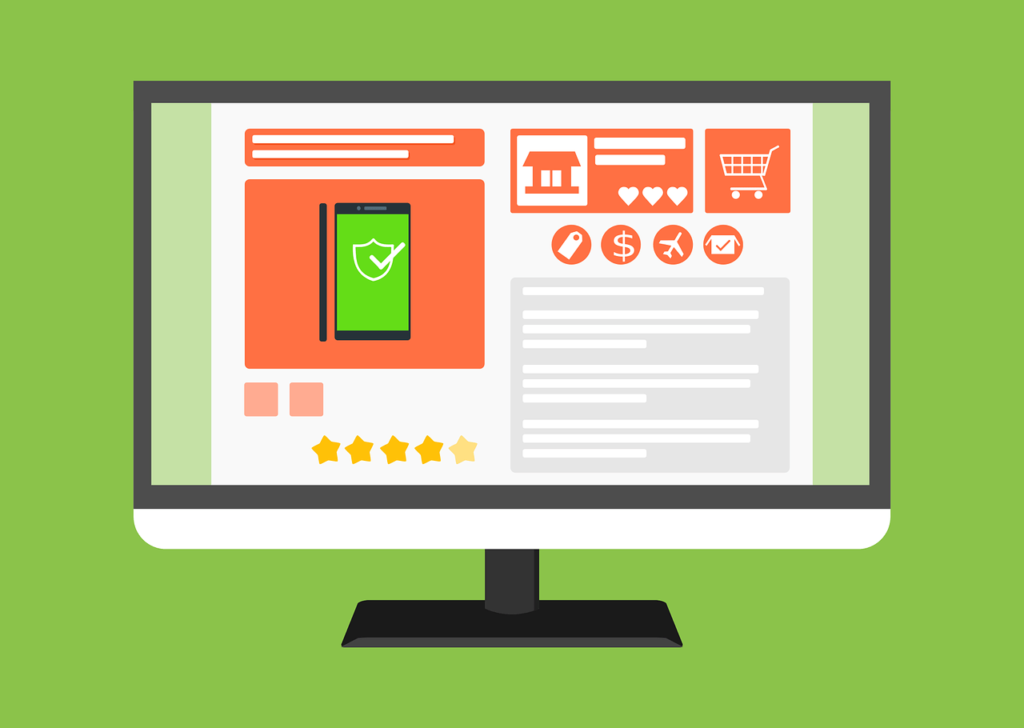So you’ve got a great product or idea and you’re ready to take the leap into the world of e-commerce. But where do you start? In this article, we’ll show you how to build an e-commerce empire from the ground up, starting from scratch. From finding the perfect niche to setting up your online store, we’ll guide you through the essential steps to launch and grow a successful e-commerce business. Whether you’re a budding entrepreneur or an established brick-and-mortar store looking to expand online, get ready to turn your dreams into reality.
1. Choose a Product or Niche
Research current market trends
When starting an e-commerce business, it’s important to research current market trends. By staying up-to-date with the latest trends, you can identify what products or niches are in high demand. Online platforms like Google Trends and social media platforms can provide valuable insights into popular products and emerging trends.
Identify a gap in the market
Once you’ve identified the current market trends, it’s essential to find a gap in the market. Look for opportunities where there is a demand for products but limited competition. This will allow you to target a specific audience and establish your business as a unique offering in the market.
Consider your passion and expertise
While researching market trends, also consider your own passion and expertise. Starting a business that aligns with your passion will not only make the process more enjoyable but also allow you to leverage your knowledge and expertise in that particular area.
Evaluate product demand and potential profitability
Once you have a product or niche in mind, evaluate the demand and potential profitability. Conduct market research to understand the size of the target audience and their purchasing habits. This will give you a clear idea of the potential profitability of your chosen product or niche.
2. Conduct Market Research
Analyze target audience
A vital step in launching a successful e-commerce business is to analyze your target audience. Understand their demographics, preferences, and shopping behavior. This knowledge will enable you to tailor your marketing efforts and product offerings to meet their specific needs.
Identify competitors
Identify your competitors in the market. Analyze their strengths, weaknesses, pricing strategies, and customer base. This will help you understand how to differentiate your business and provide a unique value proposition to your target audience.
Study consumer behavior
Understanding consumer behavior is crucial to develop effective marketing strategies. Study how consumers make purchasing decisions, what influences their choices, and what factors drive their loyalty. This knowledge will help you create compelling marketing messages and provide a seamless shopping experience for your customers.
Determine pricing strategies
Pricing your products competitively is essential to attract customers and generate sales. Evaluate your costs, overheads, and profit margins. Consider different pricing strategies such as cost-plus pricing, value-based pricing, or competitive pricing, keeping in mind your target audience’s purchasing power and willingness to pay.
Explore potential distribution channels
Consider the different distribution channels available to sell your products. From setting up your own e-commerce website to selling on third-party marketplaces like Amazon or eBay, each channel has its own advantages and challenges. Research the options and choose the one that best suits your business model and target audience.

3. Develop a Business Plan
Define your brand identity
Defining your brand identity is crucial in establishing a strong presence in the market. Determine your brand values, mission, and unique selling proposition (USP). Craft a compelling brand story that resonates with your target audience. This will help you differentiate yourself from competitors and build a loyal customer base.
Set clear goals and objectives
Outline clear goals and objectives for your e-commerce business. These can include financial targets, sales targets, customer acquisition goals, or expansion plans. Setting specific and measurable goals will help you stay focused and track your progress as your business grows.
Outline financial projections
Developing accurate financial projections is important to ensure the financial sustainability of your e-commerce business. Consider factors such as start-up costs, monthly expenses, sales forecasts, and profit margins. This will help you determine pricing strategies, marketing budgets, and potential funding needs.
Create a marketing strategy
A well-defined marketing strategy is essential for promoting your e-commerce business and driving sales. Identify your target audience, develop a unique value proposition, and choose the most effective marketing channels. Utilize a mix of digital marketing tactics such as social media marketing, content marketing, search engine optimization (SEO), and paid advertising to reach your target audience.
Establish an organizational structure
Determine the organizational structure of your e-commerce business. Define roles and responsibilities for yourself and any team members you may have. Develop clear communication channels and establish processes for daily operations, customer service, and fulfillment.
Define product sourcing and fulfillment processes
Consider how you will source products for your e-commerce business. Will you manufacture your own products, work with suppliers, or utilize dropshipping? Determine the most efficient and cost-effective fulfillment processes, including inventory management, order processing, and shipping logistics.
4. Build an E-commerce Website
Choose a domain name
Select a relevant and memorable domain name for your e-commerce website. Choose a name that reflects your brand and is easy for customers to recall. Consider purchasing different domain extensions to protect your brand’s online presence.
Select a reliable web hosting service
Choose a reliable web hosting service that can handle the traffic and functionality requirements of your e-commerce website. Ensure that the hosting service provides secure and stable infrastructure, multiple backups, and excellent customer support.
Design an attractive and user-friendly website
Design an attractive website that aligns with your brand identity and engages visitors. Use a clean and intuitive layout, high-quality product images, and compelling copy. Optimize the user experience by ensuring fast loading times, easy navigation, and a seamless checkout process.
Ensure mobile responsiveness
With the increasing use of mobile devices for online shopping, it’s crucial to ensure that your e-commerce website is mobile-responsive. Optimize your website’s design and functionality to provide a seamless experience across different devices and screen sizes.
Integrate secure payment gateways
Security is paramount in e-commerce. Integrate secure payment gateways to provide a safe and trustworthy payment process for your customers. Popular options include PayPal, Stripe, and Shopify Payments.
Implement search engine optimization (SEO) best practices
Optimize your website for search engines to increase your online visibility and drive organic traffic. Conduct keyword research, optimize your website’s meta tags and content, and build high-quality backlinks to improve your search engine rankings.
Install analytics and tracking tools
Install analytics and tracking tools on your website to monitor performance, track user behavior, and gather valuable insights. Tools like Google Analytics can provide data on website traffic, conversion rates, and customer demographics, helping you optimize your website and marketing strategies.

5. Source and Manage Products
Identify reliable suppliers
Finding reliable suppliers is crucial to ensure product quality and timely delivery. Research and engage with suppliers who can meet your requirements and provide competitive pricing. Conduct due diligence by checking their reputation, product quality, and customer reviews.
Negotiate favorable terms and pricing
Negotiate favorable terms and pricing with your suppliers. Consider factors such as minimum order quantities, payment terms, shipping costs, and return policies. Building strong relationships with suppliers can result in better pricing and more flexible arrangements.
Ensure product quality and consistency
Maintaining consistent product quality is essential for customer satisfaction and repeat business. Develop quality control processes and conduct regular inspections to ensure that the products meet your standards. Communicate your requirements clearly to the suppliers and address any issues promptly.
Establish effective inventory management
Efficient inventory management is crucial to avoid stockouts or overstocking. Implement inventory management software to track stock levels, monitor demand trends, and automate reordering processes. This will help you optimize your inventory turnover and minimize carrying costs.
Implement a fulfillment system
Develop a streamlined fulfillment system to handle order processing, packaging, and shipping. Consider integrating with third-party fulfillment services or implementing in-house fulfillment processes. Ensure that your fulfillment system can handle both domestic and international orders efficiently.
Consider dropshipping as an option
Dropshipping is an alternative fulfillment method where suppliers ship products directly to customers on your behalf. Consider partnering with dropshipping suppliers to minimize upfront inventory costs and simplify your business operations. Research and choose reputable dropshipping suppliers who offer reliable service and quality products.
6. Create Engaging Product Descriptions and Visuals
Write compelling and informative descriptions
Craft compelling product descriptions that highlight the unique features and benefits of your products. Use persuasive language, focus on the value they offer to customers, and address any potential concerns or questions. Incorporate relevant keywords for SEO purposes, but ensure that the descriptions read naturally and provide valuable information to customers.
Capture high-quality product images
Invest in high-quality product images to showcase your products effectively. Use multiple angles, include details, and ensure that the images accurately represent the product. Hiring a professional photographer or utilizing DIY product photography setups can help you capture appealing and engaging visuals.
Create engaging videos or demonstrations
Videos can be a powerful tool to showcase your products and increase engagement. Create product demonstration videos or explainer videos that highlight the features and benefits. Post these videos on your website and social media platforms to provide an interactive and immersive experience for your customers.
Implement customer reviews and ratings
Customer reviews and ratings can influence purchasing decisions. Implement a system that allows customers to leave reviews and ratings for your products. Encourage satisfied customers to share their experiences and actively monitor and respond to reviews to build trust and credibility.

7. Develop a Marketing Strategy
Define your target audience
Clearly define your target audience based on demographics, interests, and buying behavior. This will help you tailor your marketing messages and choose the most effective channels to reach and engage your customers.
Utilize social media platforms
Create a strong presence on social media platforms such as Facebook, Instagram, Twitter, or Pinterest. Share engaging content, interact with your audience, and utilize targeted advertising to reach potential customers. Leverage the power of social media influencers to expand your reach and increase brand awareness.
Invest in search engine marketing (SEM)
Utilize search engine marketing techniques such as pay-per-click (PPC) advertising to increase your website visibility on search engine result pages. Conduct keyword research, optimize your ad campaigns, and monitor their performance to maximize your return on investment.
Implement email marketing campaigns
Build an email list of interested customers and implement email marketing campaigns. Send personalized and relevant content, promotions, and updates to nurture customer relationships and drive repeat purchases. Utilize marketing automation tools to streamline and optimize your email marketing efforts.
Leverage influencer partnerships
Partner with influencers in your industry or niche to promote your products to their audience. Choose influencers whose values align with your brand and who have a genuine following. Collaborate on sponsored content, product reviews, or giveaways to increase brand visibility and reach new customers.
Utilize content marketing
Develop a content marketing strategy to provide valuable and informative content to your target audience. Create blog posts, how-to guides, infographics, or videos that address their pain points and offer solutions. This will establish your brand as a trusted resource and drive organic traffic to your website.
Explore affiliate marketing programs
Engage with affiliates who can promote your products in exchange for a commission on sales. Join affiliate networks or establish your own affiliate program. Provide affiliates with marketing materials, track their performance, and incentivize them to drive conversions and sales.
Optimize for local search
If your e-commerce business targets local customers, optimize your website for local search results. Incorporate location-based keywords, create profiles on local directories, and encourage customers to leave reviews on platforms like Google My Business. These efforts will help you rank higher in local search results and attract customers in your area.
8. Provide Exceptional Customer Service
Establish clear communication channels
Offer multiple communication channels for customers to reach you, including email, live chat, and phone support. Clearly display contact information on your website and promptly respond to customer inquiries or concerns.
Offer multiple support options
Provide multiple support options to cater to different customer preferences. This could include self-service resources, such as an FAQ section or knowledge base, as well as personalized assistance through customer support agents or chatbots.
Respond promptly to customer inquiries
Timely responses to customer inquiries are crucial for building trust and providing excellent customer service. Strive to respond to customer inquiries within 24 hours, if not sooner. Utilize automated responses or chatbots to acknowledge customer inquiries and set expectations for response times.
Handle returns and refunds efficiently
Develop clear return and refund policies to address customer concerns and simplify the process. Provide detailed instructions on how customers can initiate returns or request refunds, and ensure that the process is handled promptly and professionally.
Personalize customer interactions
Personalize customer interactions to make them feel valued and appreciated. Address customers by their names in communications, send personalized offers or recommendations based on their purchase history, and follow up with customers after their purchase to ensure their satisfaction.
Leverage customer feedback for continuous improvement
Regularly collect and analyze customer feedback to identify areas for improvement and drive business growth. Implement surveys, feedback forms, or review platforms to gather customer insights. Act upon feedback to enhance your products, services, and overall customer experience.

9. Monitor and Analyze Performance
Track website traffic and user behavior
Utilize web analytics tools to track website traffic, user behavior, and conversion rates. Monitor key metrics such as page views, bounce rates, and average session durations to identify areas for improvement and optimize your website’s performance.
Analyze conversion rates
Analyze your conversion rates to understand the effectiveness of your marketing efforts and website design. Monitor the conversion rates at different stages of the customer journey, such as from website visitors to email subscribers, or from browsing to completed purchases. Optimize your marketing campaigns and website elements to improve conversion rates.
Monitor customer retention
Customer retention is as important as customer acquisition in e-commerce. Monitor customer retention rates and identify strategies to increase customer loyalty and repeat purchases. Implement customer loyalty programs, personalized offers, or exclusive discounts for returning customers.
Assess marketing campaign effectiveness
Regularly assess the effectiveness of your marketing campaigns. Track the ROI of your advertising efforts, analyze the performance of different channels, and make data-driven decisions to optimize your marketing budget allocation.
Optimize website performance and user experience
Regularly monitor and optimize your website performance and user experience. Identify and fix any issues that may impact loading times, navigation, or checkout processes. A smooth and seamless website experience will improve customer satisfaction and increase conversions.
10. Scale and Expand Your E-commerce Empire
Invest in additional marketing channels
As your e-commerce business grows, explore additional marketing channels to reach a wider audience. Consider investing in influencer marketing, podcast advertising, or sponsored content on niche websites. Continuously evaluate and test different marketing channels to maximize your brand exposure and customer acquisition.
Expand product offerings
Expand your product offerings based on customer demand and market trends. Conduct market research, seek customer feedback, and identify potential product extensions or complementary offerings. Continually innovating and expanding your product range will help you attract new customers and increase customer loyalty.
Consider international expansion
As your e-commerce business becomes more established, consider expanding internationally. Research and evaluate potential markets, understand cultural nuances, and adapt your marketing and fulfillment strategies accordingly. Seek partnerships or utilize local marketplaces to streamline your expansion efforts.
Explore partnerships and collaborations
Collaborate with other businesses or industry influencers to expand your brand reach. Joint marketing campaigns, co-branded products, or strategic partnerships can help you tap into new markets or target new customer segments. Find partners whose values align with your brand and who have a complementary customer base.
Evaluate opportunities for automation and outsourcing
As your e-commerce empire grows, evaluate opportunities for automation and outsourcing. Implement processes and tools that can automate repetitive tasks, such as inventory management or email marketing. Outsource non-core activities, such as customer support or fulfillment, to focus on strategic business growth.
Stay updated with industry trends and innovations
Continuously monitor industry trends and innovations to stay ahead of the competition. Attend conferences or webinars, join industry forums, and network with other e-commerce professionals. By staying updated and adaptable, you can position your e-commerce business for long-term success and sustained growth.
Building an e-commerce empire from scratch requires careful planning, thorough research, and continuous adaptation to market trends. By following these steps and taking a customer-centric approach, you can establish a successful e-commerce business that resonates with your target audience and drives sustainable growth.

